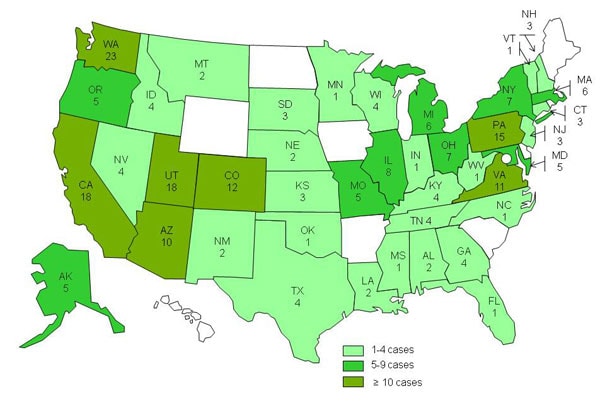In May, June, July and August 2011, Influenza activity was low in North America, Europe, Northern Asia, Middle East and North Africa. Tepid latitudes of Northern hemisphere remained at baseline inter-seasonal levels.
The 2011 influenza season in South Africa peaked in the end of June. The majority of samples were identified as 2009 H1N1 virus. Flu levels were still moderate in early July but illness activity became low by the end of July.
Dominican Republic, Cuba, Honduras and Brazil observed moderate activity (peak was in the end of June/beginning of July). Columbia had active circulation of 2009 H1N1 virus, but there were no new cases in July and August. Illness levels in Peru and Bolivia also returned to low levels.
Flu activity in August was low in countries of Western Africa (Ghana, Cameroon and Senegal), and Southern Asia (India, Bangladesh, Thailand, and Singapore). Google flu trends predicted increased activity for South Africa and Chile in June-July and Uruguay in July-August. WHO data showed that flu levels returned to low in South Africa, but started to increase for Chile, Uruguay and Argentina marking the peak of the season.
In Australia, influenza-like illness consultations and laboratory-confirmed cases continue to increase.
The flu season started in the end of April, rates slightly declined in mid May but kept increasing since. The most common virus was influenza A(H1N1)2009 but influenza B was also prevalent, unevenly distributed across the country.
According to the ESR Kenepuru Science Centre and the WHO, flu incidents in New Zealand increased from mid-May through the end of July, but decreased during the first two weeks of August. ILI activity in New Zealand remained around expected levels and the majority of viruses detected have been influenza B.
See the latest CDC Global and WHO updates for more.










I wouldn ‘ t so much call it ” allergies ” as I would call it ” polluted air ” . I ‘ m sure big cities are worse , the ones I ‘ ve been in are anyways , but Kihei is not the place to come for fresh air . If you had to be on Maui , I’ d suggest something Hana way , I ‘d LOVE to be there myself , but we ( gf and myself ) are not bohemian millionaires , nor are we locals , so nix that idea . If you have the money it ‘s the place to be …..
unless if you have problems with mold . In which case , Kaua ‘ i , and Hilo area would be bad for you …. they both have a very wet climate , as I ‘ m sure you know Hana area has as well ( although not nearly as wet ) .
My ” best ” suggestion for you two , I ‘ d guess something on Oahu , away from the city for sure , maybe towards North Shore , although somewhere thats not tooo wet . Oahu doesnt seem to get the vog as badly ( although they did get a spell of it around the time of the World Series last year ) as islands that are closer to Big Island …..
by the way , your husband prob got sick between May and August because of the wind pattern at that time of the year …. pulling vog from Big Island .
Lastly , I am a runner , moved from Minnesota , and the amount of stamina I ‘ ve lost in the year and a half that I ‘ ve been here ………wow .( And I run at night mostly. ) They burned here on Friday and now several people at work ( today is Sunday ) are sick …… I guess my points are 1.) money always tries to blame people for their ” allergies ” as they are sickening people ; 2.) there are better places out here than Kihei.
by AllergyNurse
I’m on Maui now. Different grasses but the Waddle trees here leave enough pollen to coat a house! Shorter season than grass though, and not quite as bad. Cost of living here is killing me instead!